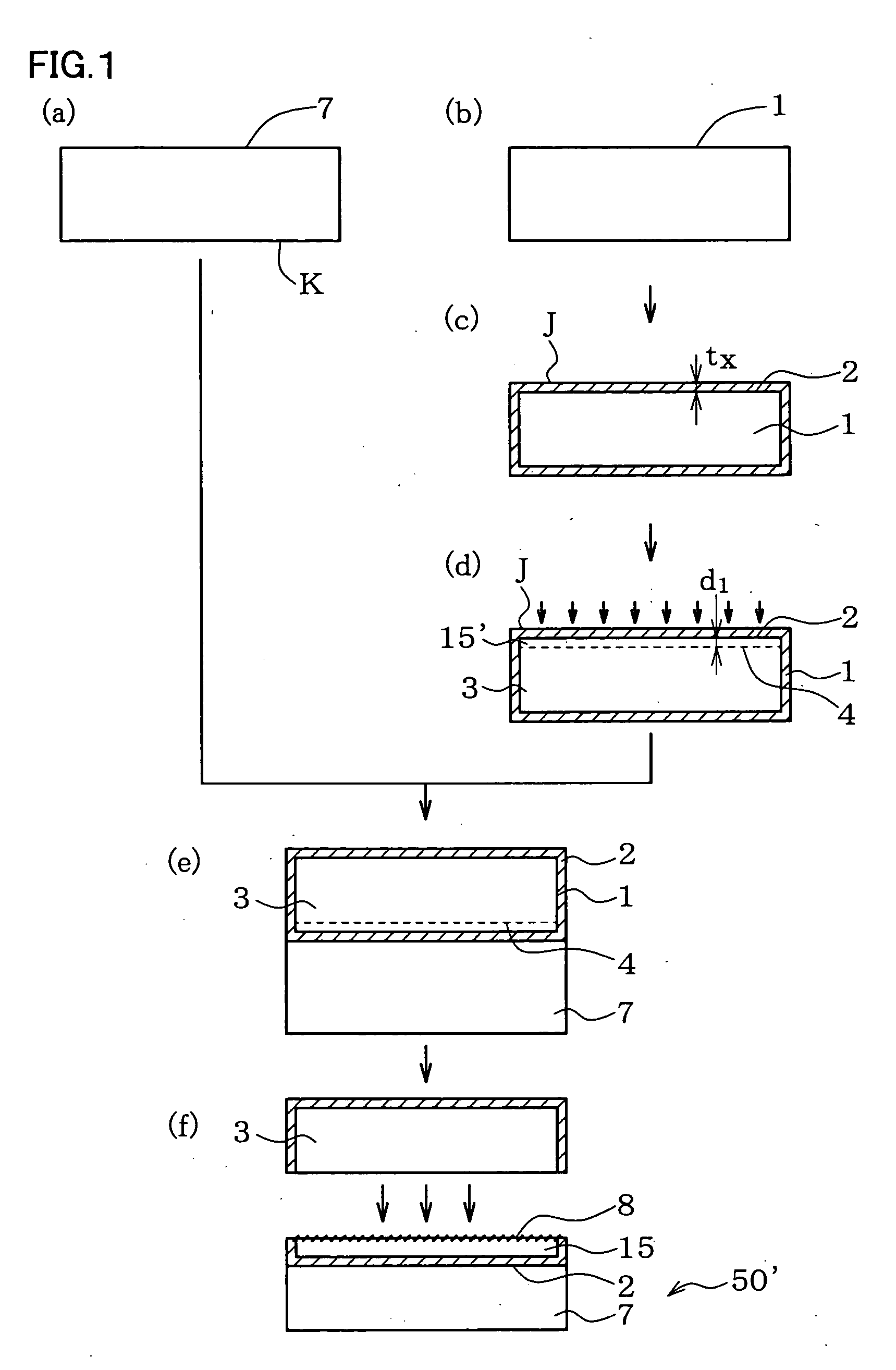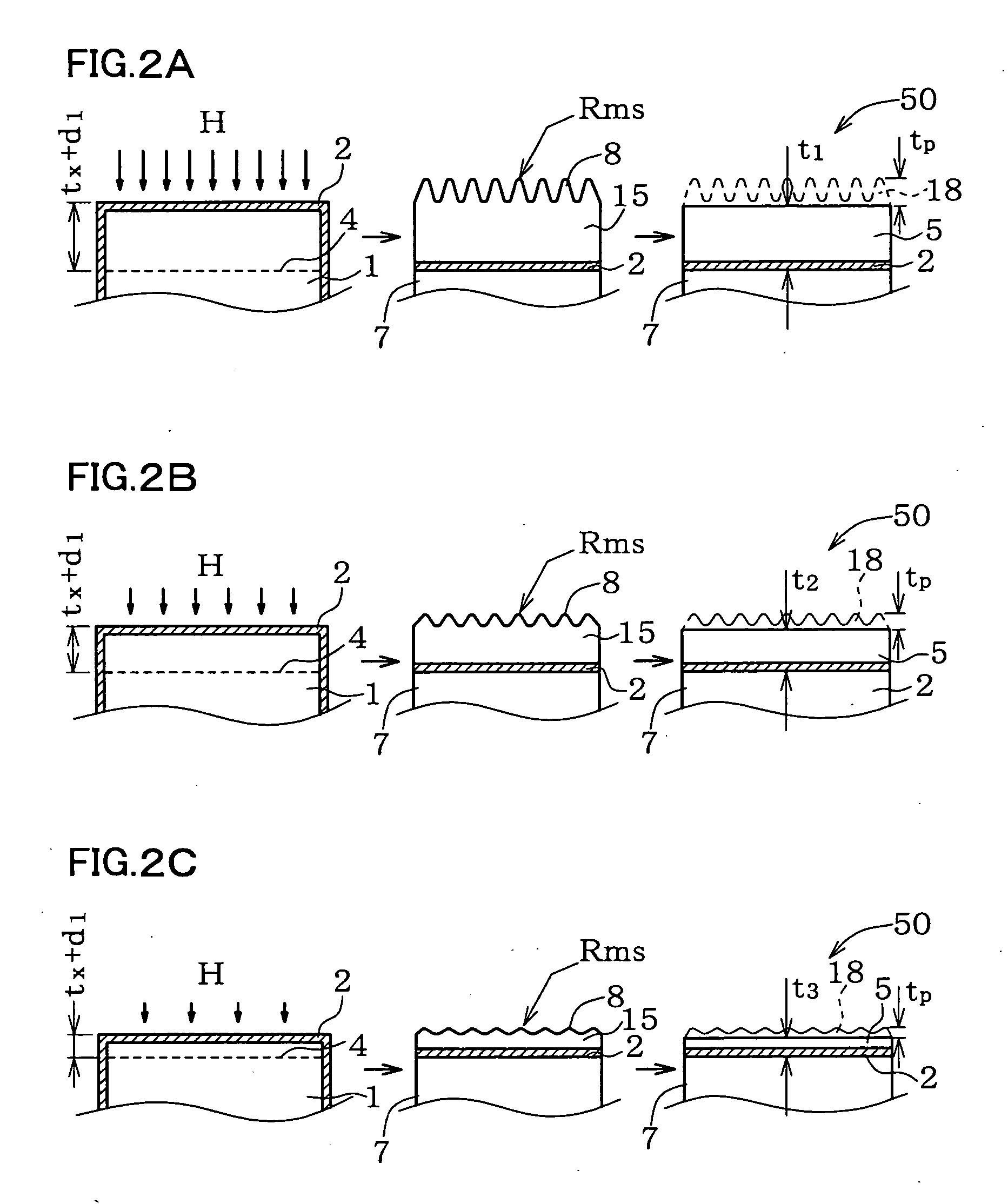Soi wafer manufacturing method
a manufacturing method and technology of soi wafer, applied in the direction of basic electric elements, electrical apparatus, semiconductor devices, etc., can solve the problems of reducing the ion implantation dose, and reducing the influence of non-uniform polishing stock removal to a considerable degree, so as to and reduce the roughness of the separation surfa
- Summary
- Abstract
- Description
- Claims
- Application Information
AI Technical Summary
Benefits of technology
Problems solved by technology
Method used
Image
Examples
Embodiment Construction
[0027] The following paragraphs will describe best modes for carrying out the invention.
[0028]FIG. 1 is a drawing explaining a basic embodiment of the method of fabricating an SOI wafer according to the present invention. First, a base wafer 7 shown in step (a) as a first substrate typically composed of silicon single crystal, and a bond wafer 1 shown in step (b) as a second silicon single crystal substrate are obtained. The bond wafer 1 has, as shown in step (c), a silicon oxide film 2 as an insulating film formed at least on a first main surface J side thereof. The silicon oxide film 2 can be formed by thermal oxidation such as wet oxidation or dry oxidation, and it is also allowable to adopt a method such as CVD (chemical vapor deposition). Thickness of the silicon oxide film tx is adjusted to approximately 50 nm to 2 μm, both ends inclusive, considering that it is used as an insulating layer typically for MOS-FET. The base wafer 7 may be an insulating substrate such as quartz s...
PUM
 Login to View More
Login to View More Abstract
Description
Claims
Application Information
 Login to View More
Login to View More - R&D
- Intellectual Property
- Life Sciences
- Materials
- Tech Scout
- Unparalleled Data Quality
- Higher Quality Content
- 60% Fewer Hallucinations
Browse by: Latest US Patents, China's latest patents, Technical Efficacy Thesaurus, Application Domain, Technology Topic, Popular Technical Reports.
© 2025 PatSnap. All rights reserved.Legal|Privacy policy|Modern Slavery Act Transparency Statement|Sitemap|About US| Contact US: help@patsnap.com



